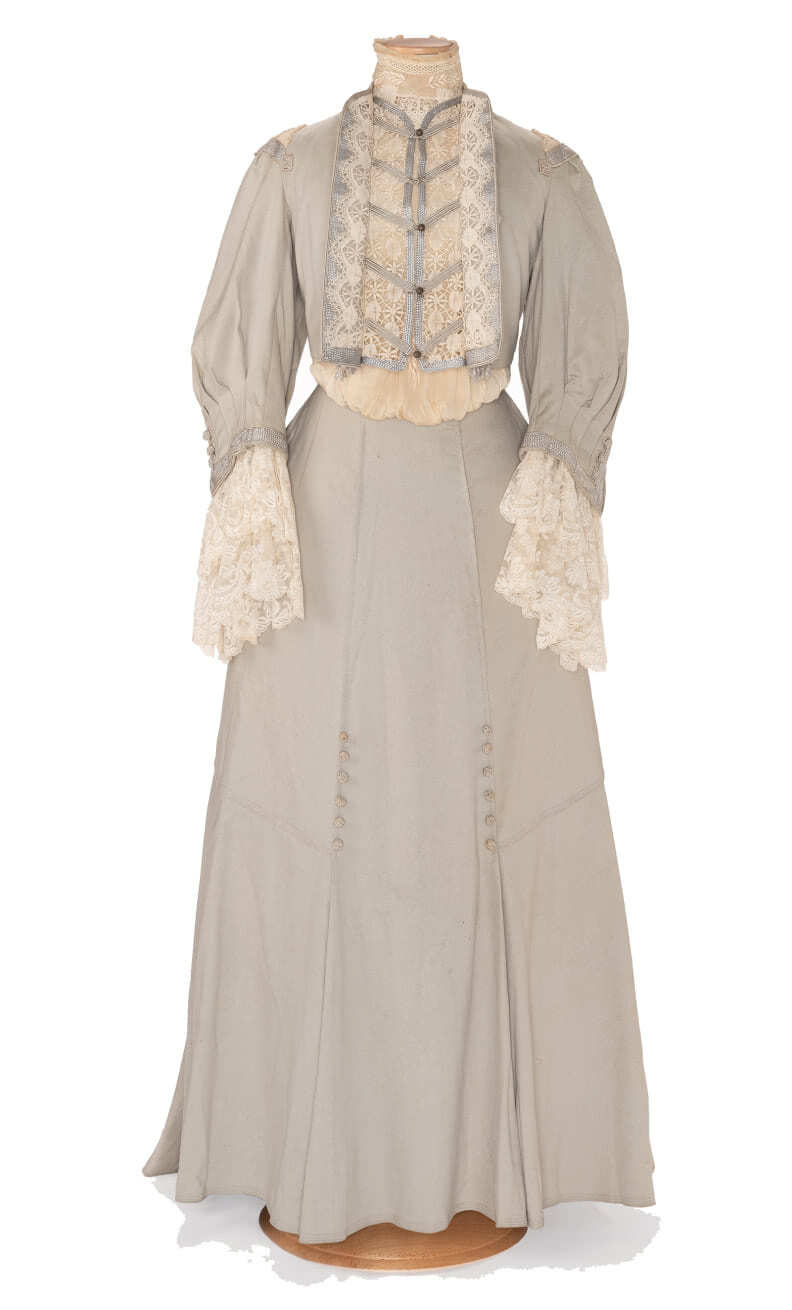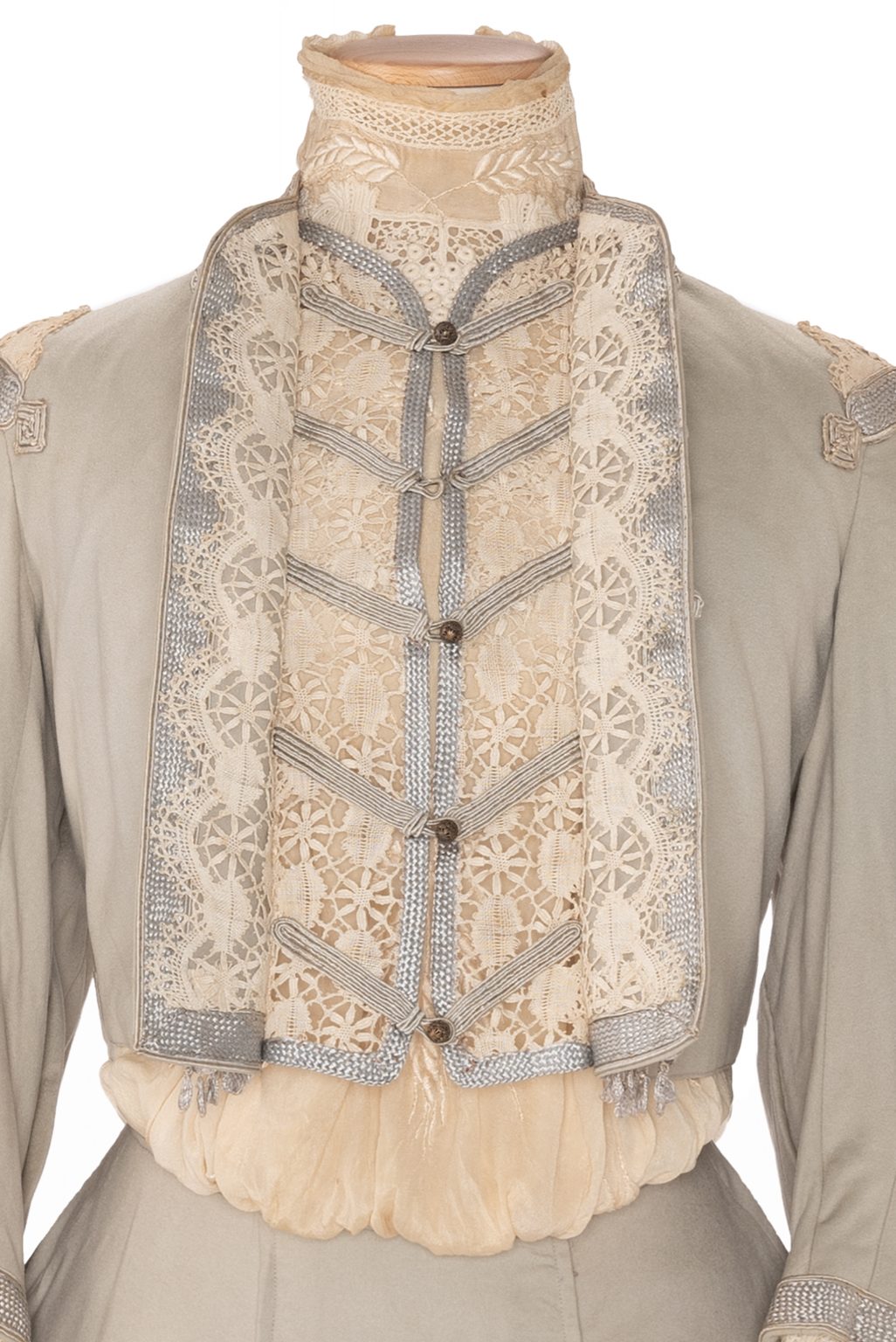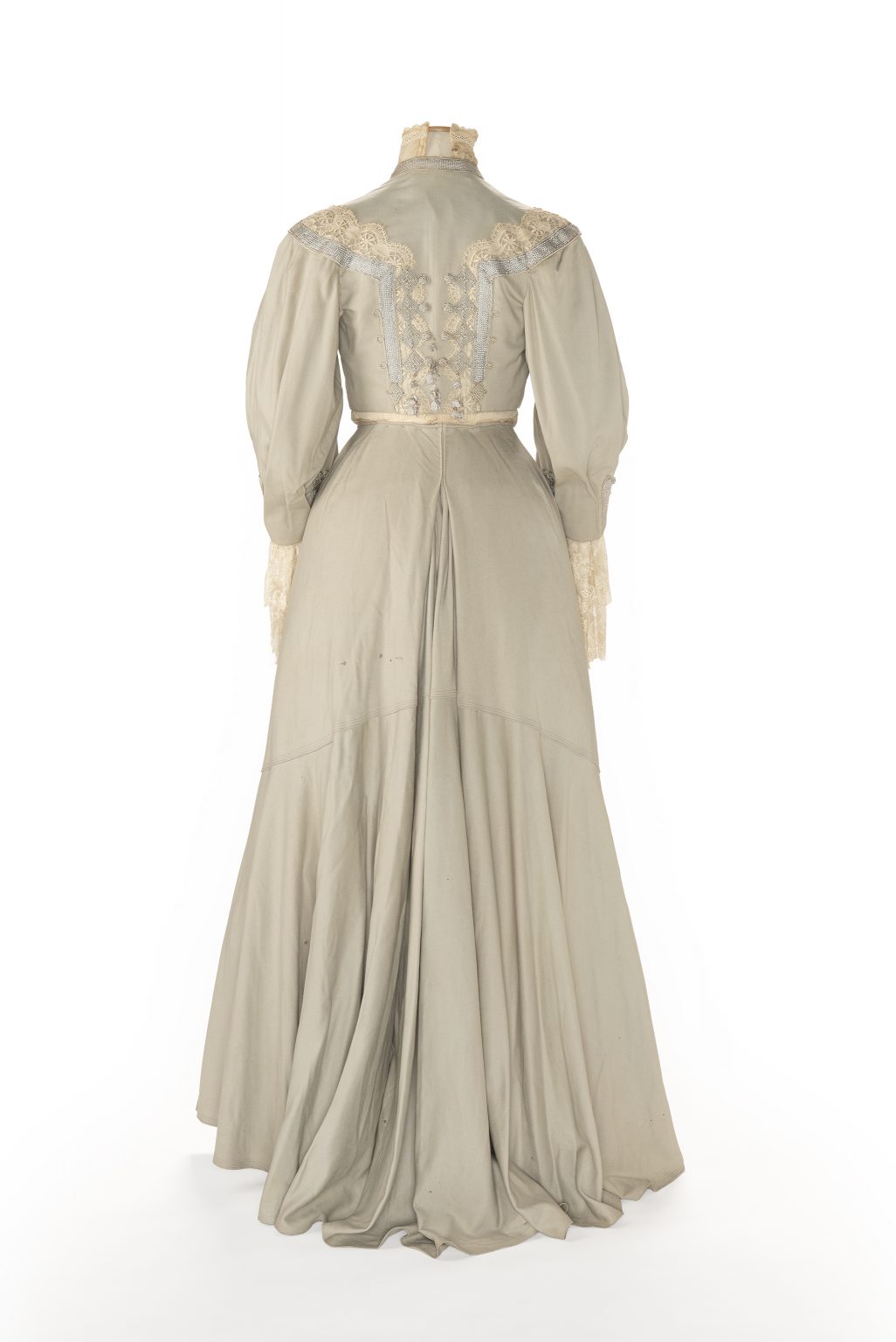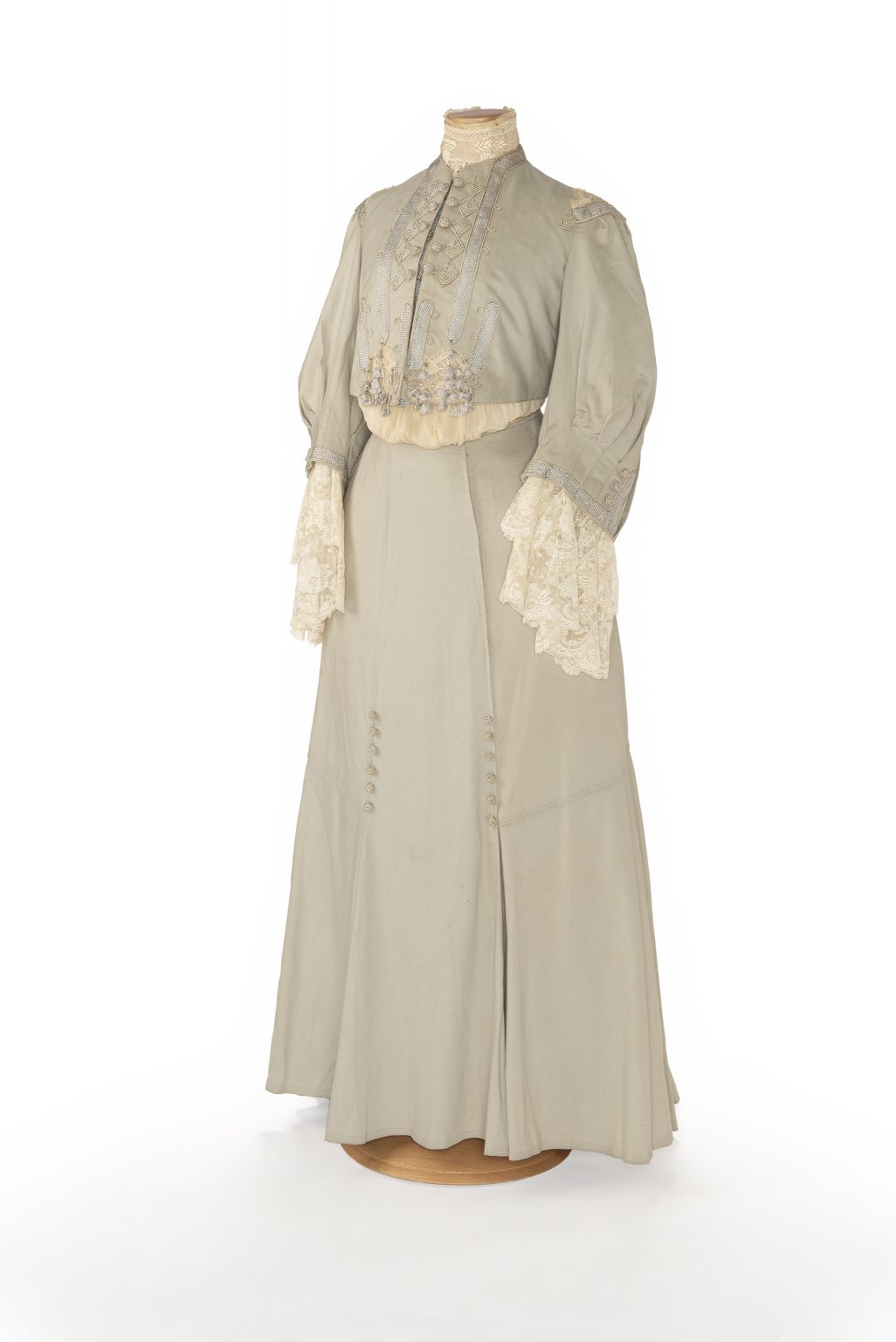
1900
Women’s suit consisting of a short jacket and a long skirt in grey-green wool trimmed with silk braid, buttons, and lace. Designed by Frederick Bosworth, London, c. 1902 – 1908. Camilla Colombo Collection
Details



Historical context
The first decade of the twentieth century saw the advent of many important artistic and technological innovations that had begun developing within the fertile socio-cultural environment of the nineteenth century and which were exhibited for the first time at the Universal Exposition in Paris in 1900. The Art Nouveau designs of Otto Wagner, Victor Horta and Hector Guimard challenged traditions in the field of architecture. On a political level, the breakdown of European stability, fuelled by the economic rivalries and political conflicts between the major powers, provoked a growing sense of unease,
which Sigmund Freud interpreted in his books The Interpretation of Dreams (1899) and The Psychopathology of Everyday Life (1904). In 1901, the long reign of Queen Victoria drew to an end and Edward VII was proclaimed King of England, while in the United States Theodore Roosevelt was elected president. In the West, the optimism of the Belle Époque was amplified by the major technological achievements that accelerated the pace of life: from the first radio transmission and phototelegraphy to the increasingly tangible possibility of flight that came to fruition in 1903 with the Wright brothers. In the
same year, Marie Curie and Henri Becquerel won the Nobel Prize for their research into radium and Albert Einstein began to develop the theory of relativity, which challenged the foundations of traditional science. In 1907 Pablo Picasso painted Les Demoiselles d’Avignon, universally recognised as the first example of Cubist art, and the Lumière brothers enchanted the world with colour photography. On the other side of the world, the Russo-Japanese war ended with Japanese victory and growing strikes and demonstrations in Russia. The political scene at the beginning of the century was marked by the hint of war which was further exacerbated by the growing interest of European governments in increasingly assertive colonial policies.
Techical info
Women
The domestic environment at the beginning of the twentieth century Until the end of the 19th century, much of a woman’s social life in aristocratic and bourgeois circles revolved around the drawing room, which, together with the theatre and the opera, was the stage for social and cultural relations. A woman was a central figure in domestic life. She needed to possess the
characteristics of a good hostess and be virtuous and chaste in order to aspire to marriage, create a family and raise numerous children. In bourgeois families, women were expected to be efficient, uncomplicated and attentive to the household economy in order to guard and preserve the family patrimony. They were also expected to avoid showing any great interest in public life or political activities. The art of embroidery and musical ability were considered quiet and admirable pastimes for bourgeois women. The life of a working class woman was completely different. Although increasing industrialisation and the widespread growth of factories led many women to work outside the home, they continued to be relegated to domestic chores after work and faced the difficult task of balancing the roles of wife, mother and worker. The formality of social life continued to be reflected in women’s clothing at the beginning of the twentieth century, forcing the body into rigid structures which, although lighter than before, still inhibited movement. Gradual change occurred with the growth of liberal thought and the subsequent emergence of women from various social backgrounds who began to fight for the affirmation of their rights.